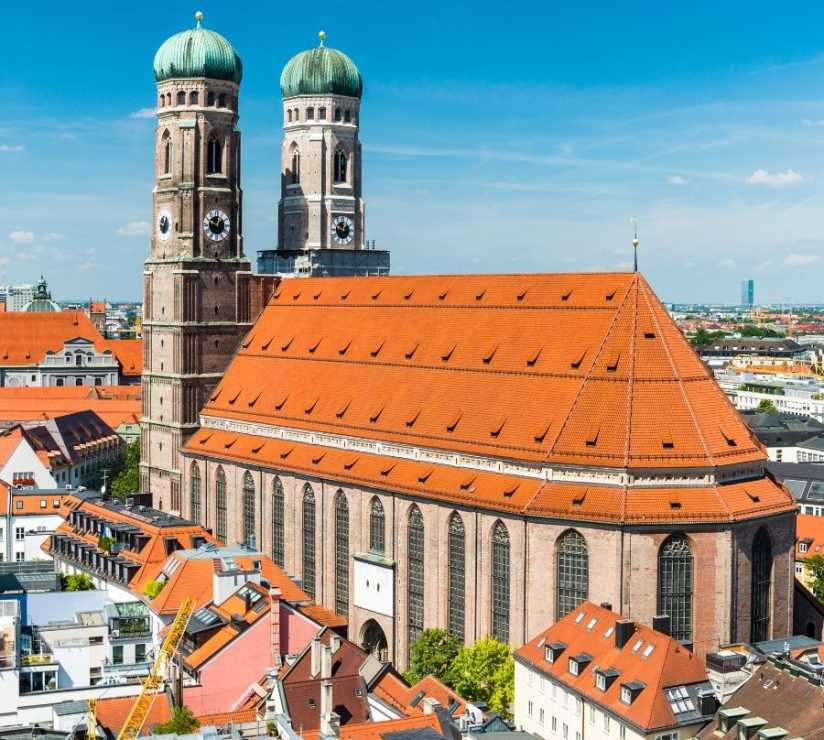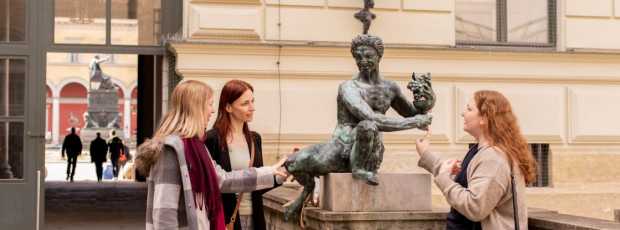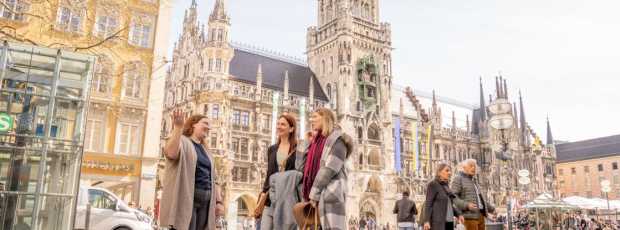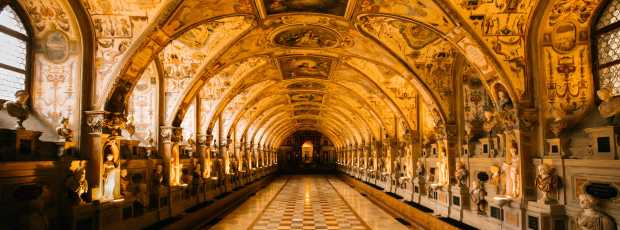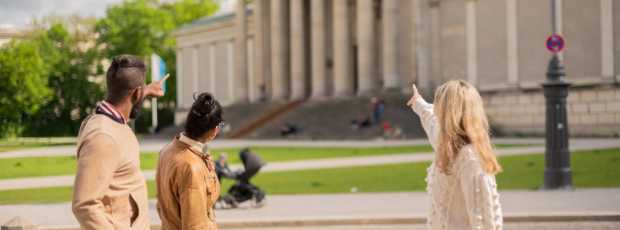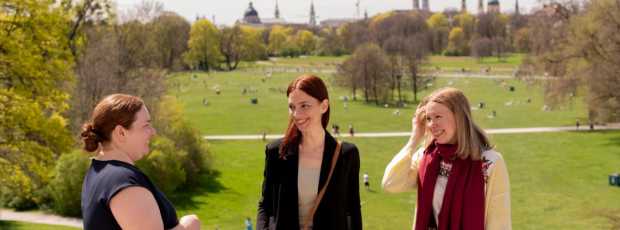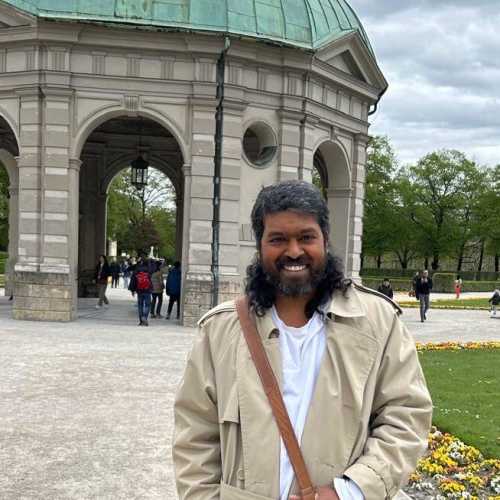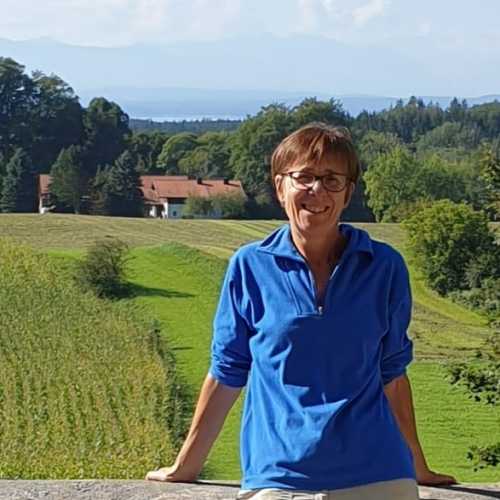Table Of Contents
- Why Everyone Gets Munich Wrong
- The Art of Slow Munich
- Hidden Neighborhoods That Actually Feel Hidden
- Beer Culture Beyond the Tourist Trail
- Green Spaces Where Locals Actually Go
- Food Culture That Guidebooks Miss
- Alternative Festival Experiences
- Art and Culture Off the Main Circuit
- Day Trips That Locals Actually Take
- Transportation Secrets That Save Time and Money
- The Rhythm of Local Life
I've lived in Munich for thirty-seven years, and I still roll my eyes when tourists ask me about the "must-see" spots. Not because I'm anti-tourist, I actually enjoy sharing my city, but because the places that end up on every bucket list are rarely the ones that stick with you afterward. The real Munich, the one that locals guard a bit possessively, exists in the spaces between the guidebook entries.
This isn't another listicle promising you'll "discover the real Munich" by visiting the same alternative spots every other travel blog mentions. Instead, I want to share the places I actually go, the routines that make this city feel like home, and the corners where Munich reveals itself without trying to impress anyone. Some of these spots might surprise you. Others might seem almost disappointingly ordinary. That's exactly the point.
Why Everyone Gets Munich Wrong
The problem with most Munich coverage is that it treats the city like a theme park version of Bavaria. You get the beer halls, the lederhosen, the pretzels, all authentic enough, but presented like museum pieces rather than living culture. Meanwhile, the actual rhythms of Munich life happen elsewhere entirely.
Take Oktoberfest, for instance. Every year, millions of people descend on the festival grounds for what they think is the definitive Munich experience. And yes, the beer tents are impressive. Massive structures that can hold thousands of people, with oompah bands and enough ice cold beer to float a small boat. But if you want to understand how locals actually celebrate, you need to look beyond the main event.
The real beer festival happens in the neighborhoods surrounding the Theresienwiese, where small pubs and beer gardens become impromptu gathering spots for people who've either had enough of the crowds or never bothered with the official festival in the first place. These places don't advertise themselves as alternatives to Oktoberfest, they're just regular neighborhood spots that happen to get a bit livelier when all the world comes to town.
This is what I mean when I talk about Munich off the beaten path. It's not about finding secret locations that locals don't want you to know about. It's about understanding that the best experiences often happen when you stop trying so hard to have an experience.
The Art of Slow Munich
Munich rewards patience in ways that other German cities don't always manage. Berlin demands your attention with its energy and constant change. Hamburg seduces you with its maritime sophistication. Munich simply exists, confident that you'll eventually notice what makes it special.
The city's best quality might be its complete lack of urgency. This drives some visitors crazy—especially Americans who've planned their European vacation down to the minute. But if you can adjust your expectations and move at Munich's slower pace, you'll discover experiences that no tour can replicate.
I learned this lesson years ago when I was showing a friend from London around the city. He'd booked one of those comprehensive Munich Oktoberfest tours that promised to hit all the major beer tents, complete with reserved seating and insider access. It was efficient, well-organized, and thoroughly miserable. By hour three, he was drunk on overpriced beer, surrounded by other tourists taking identical photos, listening to the same songs he'd heard in the previous tent.
The next day, I took him to Augustiner-Bräu München, not for their famous beer hall, but for their small brewery tap room that most people walk past without noticing. We spent four hours there, talking to the brewmaster, learning about Munich's beer culture from someone who'd lived it for decades, drinking German beer that never made it to the festival grounds. It cost half as much and taught him more about Munich in one afternoon than the Oktoberfest tour had managed in a full day.
Looking for a private city experience in Munich?
Explore the city with a local who plans a private day just for you; no groups, no scripts.
Hidden Neighborhoods That Actually Feel Hidden
Glockenbach: Beyond the Guidebook Version
Every travel article mentions Glockenbach as Munich's trendy district, but they always focus on the same handful of bars and restaurants along Glockenbach Strasse. The real character of the neighborhood lives in the residential streets that branch off from the main drag.
Take Erhardtstrasse, for example. It's lined with the kind of small, family-run businesses that make a neighborhood feel alive rather than curated. There's a butcher shop that's been run by the same family for three generations, a tiny bookstore that specializes in local history, and a café that serves the best Milchkaffee in the city but has never bothered to put up a sign in English.
The people who live here aren't performing authenticity for tourists. They're just living their lives, which happens to include stopping at the corner bakery for fresh bread every morning and chatting with neighbors while walking their dogs. It's the kind of ordinary daily ritual that visitors often overlook while searching for more Instagram-worthy experiences.
When visiting Munich, this neighborhood becomes your go to place for understanding how locals actually live. The German food here is served without fanfare, simple, honest cooking that focuses on flavor rather than presentation.
Au-Haidhausen: Where Munich Gets Quiet
Most visitors never make it to Au-Haidhausen, which is exactly why locals love it. The district sits just across the Isar from the old town, close enough to walk to the major attractions but far enough away to maintain its own distinct personality.
The area around Lilienstrasse and Kirchenstrasse feels like a different city entirely. Small beer gardens tucked between apartment buildings, corner grocery stores where the owners know their customers by name, and the kind of unhurried atmosphere that makes you want to find a bench and watch the world go by.
One of my favorite spots in the neighborhood is Hofbräukeller, not the famous Hofbräuhaus that every tourist visits, but its quieter cousin in Haidhausen. The beer garden here holds about 400 people compared to the thousands that pack into the more famous location, and the crowd is almost entirely local. Families bring their children, older men play cards under the chestnut trees, and conversations happen in German rather than a mixture of broken English and tourist excitement.
The food here is better too. Less focused on accommodating international palates and more concerned with serving the kind of hearty Bavarian dishes that locals actually order. The schweinebraten (roast pork) comes with crispy skin and perfectly prepared sauerkraut, not the sanitized version you'll find at more tourist-oriented places. Their pork knuckle is particularly exceptional, prepared using techniques that have been perfected over generations.
Beer Culture Beyond the Tourist Trail
The Microbrewery Revolution Munich Doesn't Advertise
While tourists queue up for tables at the famous beer halls, Munich's craft beer scene has been quietly evolving in ways that would surprise visitors who think the city is stuck in traditional brewing methods. Small breweries have been opening throughout the city, not as tourist attractions but as genuine additions to neighborhood life.
Tilmans Biere, tucked away in a converted warehouse in the Werksviertel district, represents this new generation of Munich brewing. The space feels more like an industrial loft than a traditional beer hall, with concrete floors, exposed pipes, and beer served in glasses that look nothing like the ornate steins most visitors expect. But the beer is exceptional, hoppy IPAs, rich stouts, and experimental brews that push beyond Bavaria's traditional styles.
What makes places like this special isn't just the beer, though. It's the fact that they exist for locals first, tourists second. The bartenders are happy to explain their brewing philosophy, but they're not performing authenticity for visitors. They're simply passionate about beer and excited to share that passion with anyone who's genuinely interested.
The big six breweries that dominate Munich's beer landscape; Augustiner, Hofbräu, Löwenbräu, Franziskaner, Spaten, and Weisses Bräuhaus, still produce excellent German beer, but these smaller operations offer something different: innovation within tradition, creativity that honors Munich's brewing heritage while pushing it forward.
Neighborhood Beer Gardens That Tourists Never Find
Munich has over 100 beer gardens, but most visitors only visit the famous ones like the Augustiner-Bräu or the beer garden in the English Garden. The smaller neighborhood spots offer a completely different experience; more intimate, less performative, and often with better food.
Waldwirtschaft Großhesselohe sits at the edge of the city, accessible by S-Bahn but far enough out that it requires a bit of effort to reach. The beer garden spreads out under enormous old trees, with wooden tables that have been carved with decades of initials and inside jokes. On summer evenings, families gather here for dinner, couples share quiet conversations over beer, and groups of friends play cards until well after sunset.
The beer here comes from Löwenbräu, nothing exotic or craft, just perfectly poured lager served in proper one-liter maß glasses. But the setting transforms even ordinary beer into something memorable. You can hear birds singing in the trees above, watch children play on the adjacent playground, and feel like you've stumbled into someone's backyard party rather than a commercial establishment.
This is where you'll find all the fun that tour guides never mention. Locals teaching children traditional card games, impromptu singing when someone brings a guitar, and the kind of authentic community interaction that makes you love Munich in ways that official attractions never could.
The Rituals Tourists Don't Understand
Beer culture in Munich operates according to unwritten rules that locals learn through years of practice. Visitors often miss these subtleties, which is why their beer hall experiences can feel hollow compared to what they expected.
Take the concept of a stammtisch, for example. These are regular tables reserved for groups of friends or colleagues who meet at the same beer hall or garden every week, sometimes for decades. The tables themselves might look identical to tourist seating, but they represent ongoing relationships and community connections that give Munich's beer culture its real meaning.
I've been part of a stammtisch at Löwenbräukeller for eight years now. Every Thursday evening, six of us meet at the same table to drink beer, argue about football, and catch up on each other's lives. Tourists sometimes ask to join us, and we're always polite, but they never quite understand that they're witnessing something more significant than just friends having drinks.
This is what I mean about Munich's beer culture extending beyond the beer itself. The drink is just the excuse for gathering, the social lubricant that makes community possible. When you see this in action, really see it, not just observe it as an outsider, Munich starts to make more sense.
Green Spaces Where Locals Actually Go
English Garden: Beyond the Surfer Spot
Everyone knows about the English Garden, and most visitors head straight to the artificial wave where surfers perform for crowds of tourists. It's undeniably impressive; skilled surfers riding a standing wave in the middle of a city, hundreds of miles from the nearest ocean. But this spectacle represents everything that's wrong with how tourists experience Munich's green spaces.
The real English Garden begins where the crowds thin out. Walk north from the surfer spot for about fifteen minutes, and you'll find yourself in sections of the park that feel completely wild despite being in the center of a major city. Here, locals jog along quiet paths, families have picnics without competing for space, and you can actually hear birds singing instead of camera shutters clicking.
My favorite section lies around the Kleinhesseloher See, a small lake that's popular with locals but rarely mentioned in guidebooks. The path around the lake passes through meadows where people sunbathe in summer and cross-country ski in winter. There's a beer garden here too (Seehaus) but it's smaller and quieter than the famous Chinese Tower beer garden that every tourist visits.
What makes the English Garden one of the largest urban parks in the world isn't just its size, it's the diversity of experiences it offers. You can spend entire days exploring different sections, from formal gardens to wild meadows, from busy gathering spots to isolated corners where you might not see another person for hours.
Westpark: Munich's Best-Kept Green Secret
While tourists pack into the English Garden, locals increasingly prefer Westpark, especially the sections that most people never explore Munich visitors. The park was built for the 1983 International Garden Exhibition, which means it was designed with more intention than the organic sprawl of older Munich parks.
The East Asian garden section feels like stepping into a different world entirely. Carefully designed landscapes with small bridges, meditation areas, and walking paths that encourage contemplation rather than hurried sightseeing. I come here when I need to think, usually in early morning when the only other visitors are dog walkers and elderly people practicing tai chi.
The rose garden in Westpark blooms spectacularly in June and July, but even locals don't always know about it. Hundreds of varieties of roses create a sensory experience that's both beautiful and surprisingly moving. The paths wind between the flower beds in ways that reveal new combinations of colors and scents with each turn.
This massive park represents one of the city's best kept secrets. A place where you can experience different cultures and landscapes without leaving Munich Germany. I could spend all day here. The park's various themed sections offer a treasure trove of quiet spaces perfect for reflection, reading, or simply watching the world go by at Munich's natural pace.
Isarauen: Following the River Away from the City
The Isar River runs through Munich, but most tourists only see the sections that flow past major landmarks. Locals know that the real beauty lies along the Isarauen, the floodplain areas where the river is allowed to meander naturally through landscapes that feel surprisingly wild.
You can bike or walk along the river for kilometers without encountering significant crowds. The path leads through meadows, small forests, and gravel bars where locals swim in summer despite the cold water. This is Munich at its most relaxed, people reading books on riverside benches, children building dams in shallow creeks, couples having picnics without having to stake out territory.
One of my favorite spots along the Isarauen is the area near the Flaucher, a large gravel bar island that's technically within the city limits but feels completely separate from urban life. Locals know this as one of the best places in Munich for barbecuing, swimming, and generally forgetting that you're in a major European city.
The river path also offers some of the best day trips you can take without leaving the city proper. Follow the Isar south toward the Alps, and you'll pass through landscapes that feel completely removed from urban life, yet remain accessible by public transportation.
What if your day in Munich was planned by someone who knows it — and you?
City Unscripted matches you with a local host who creates a private experience based on your interests, not a set route.
Food Culture That Guidebooks Miss
Markets Beyond Viktualienmarkt
Viktualienmarkt gets all the attention from food-focused visitors, and it's admittedly impressive. A bustling market in the heart of the old town with vendors selling everything from fresh produce to prepared foods. But the crowds and tourist-focused pricing make it more of an attraction than a place where locals actually shop.
For a more authentic market experience, locals prefer the smaller weekly markets that pop up in neighborhood squares throughout the city. The Saturday market at Elisenhof, for example, draws vendors who've been selling at the same spots for decades, customers who know the farmers by name, and prices that reflect actual value rather than tourist expectations.
The produce here comes from farms within driving distance of Munich, not shipped from across Europe to meet demand for exotic ingredients. You'll find the best spargel (white asparagus) in season, root vegetables that taste like they were pulled from the ground that morning, and bread from small bakeries that still use traditional methods.
Here you'll also discover German food in its most honest form. Sausages made by butchers who've perfected their recipes over generations, cheeses from small Bavarian farms, and prepared foods that reflect actual local tastes rather than tourist expectations.
Restaurant Culture Without the Performance
Munich's restaurant scene extends far beyond the tourist-oriented establishments that serve sanitized versions of Bavarian cuisine. Small neighborhood restaurants, family-run establishments that have been serving the same dishes for generations, and immigrant-owned places that reflect Munich's increasingly diverse population.
One of my favorite discoveries is a small Turkish restaurant in the Maxvorstadt district that serves the best döner in the city but has never bothered to court tourist attention. The owner, Mehmet, has been perfecting his recipe for twenty years, sourcing lamb from specific farms, making his own bread, and creating an experience that feels more authentic than any traditional Bavarian restaurant trying to recreate the past.
This represents something important about modern Munich that tourist-focused coverage often misses, the city's identity isn't frozen in time. It continues to evolve as new communities add their own traditions to Munich's cultural landscape, creating experiences that are both authentically Munich and completely contemporary.
Beer Hall Alternatives That Serve Better Food
While tourists crowd into the famous beer halls for schnitzel and sausages, locals increasingly prefer smaller establishments that take food as seriously as beer. These places understand that Bavarian cuisine can be both traditional and excellent, not just hearty and convenient.
Gratitude, a small restaurant in the Glockenbachviertel, serves elevated versions of traditional dishes using ingredients sourced from small local farms. Their sauerbraten (pot roast) is prepared using techniques that honor the dish's history while creating flavors that surprise even locals who grew up eating their grandmother's version.
The atmosphere here is completely different from the tourist beer halls. Quieter, more focused on the food, with service that's attentive without being performative. Conversations happen at normal volumes, dishes are prepared to order rather than kept warm under heat lamps, and the overall experience feels designed for people who live in Munich rather than visiting it.
Alternative Festival Experiences
Oktoberfest: What Locals Actually Do
The best Oktoberfest experiences happen away from the official festivities.
During Oktoberfest weeks, neighborhood pubs throughout Munich transform into impromptu celebration spaces. The decorations might be simpler than what you'll see in the massive beer tents, the bands might be smaller, and the crowds might be more restrained, but the atmosphere feels more genuine because people are celebrating for themselves rather than performing for tourists.
My local pub, a small place in Au-Haidhausen that's never appeared in any guidebook, becomes magical during Oktoberfest. The owner decorates with traditional blue and white bunting, brings in a small brass band on weekends, and serves the same beer you'll find at the festival grounds but in a setting where you can actually have conversations and meet locals.
This is where you'll experience the real beer festival culture that most guided tour operations never access. It's pretty cool to see how locals actually celebrate their traditions when they're not performing for cameras or competing with tourist crowds for space.
This is what I recommend to visitors who want to experience Oktoberfest culture without the circus atmosphere of the main event. Find a small pub in a residential neighborhood, order a maß of beer, and spend an evening talking to locals who are celebrating their own traditions rather than performing them for tourists.
Smaller Festivals That Feel More Munich
Munich hosts dozens of smaller festivals throughout the year that better represent the city's actual cultural life than the major tourist events. These celebrations might not make international headlines, but they offer insights into what locals actually value and enjoy.
The Auer Dult, a traditional market festival that happens three times a year in the Au district, feels like stepping back in time to when festivals served practical community purposes rather than just entertainment. Vendors sell antiques, crafts, and traditional foods, but the real attraction is the atmosphere. Families spending entire afternoons browsing, children playing traditional games, and a pace that encourages lingering rather than rushing.
The festival operates according to rhythms that most modern events have forgotten. Vendors take breaks for proper meals, conversations develop naturally between strangers, and the overall feeling is one of community celebration rather than commercial entertainment.
The spring festival (Frühlingsfest) offers another alternative to Oktoberfest's crowds. Smaller beer tents, more local attendance, and prices that reflect community celebration rather than international tourism. It's like a never ending story of Munich traditions, each festival revealing different aspects of local culture that remain hidden during the major tourist seasons.
Christmas Markets Beyond the Tourist Trail
Munich's Christmas markets are famous throughout Europe, but most visitors only experience the main market at Marienplatz, which can feel more like a commercial theme park than a traditional celebration. The smaller neighborhood Christmas markets offer a completely different experience. More intimate, less commercialized, and more focused on community gathering than tourist attraction.
The Christmas market at Schwabing, for example, specializes in handmade crafts from local artisans rather than mass-produced souvenirs. The mulled wine (Glühwein) costs half what you'll pay at the tourist markets, and the food vendors serve traditional treats made by people who've been perfecting their recipes for generations rather than commercial operations trying to maximize profit.
Children can actually move freely here without being overwhelmed by crowds, families can have conversations without shouting over tourist chatter, and the overall atmosphere focuses on celebration rather than consumption.
Art and Culture Off the Main Circuit
Street Art That Tells Munich's Real Story
Most visitors never venture beyond the main sights to discover Munich's evolving street art scene. While the city center maintains its pristine historical appearance, neighborhoods like Glockenbach and Maxvorstadt have become canvases for local artists expressing contemporary Munich culture.
The underpass near Goetheplatz, for example, has been transformed into an ongoing gallery where local artists rotate their work seasonally. It's not sanctioned tourist art. It's genuine expression from Munich's creative community, addressing everything from housing costs to environmental concerns to the changing character of the city.
What makes this street art special is its integration into daily life. These aren't destinations that require special trips. They're part of the fabric of neighborhoods where people live, work, and raise families. The art exists in conversation with the community rather than as decoration for visitors.
Museum Brandhorst and Hidden Cultural Gems
While everyone visits the famous museums in the Kunstareal, Museum Brandhorst offers a different kind of cultural experience. The building itself, with its colorful ceramic facade, signals that this isn't your typical Munich cultural institution.
The museum spreads across several floors, each offering different perspectives on contemporary art. But what makes it special for locals is the way it integrates with Munich's artistic community. Regular events, artist talks, and workshops create ongoing relationships between the museum and the city's creative residents.
The incredible view from the museum's upper floors looks out over Munich's evolving skyline, offering perspective on how this vibrant city balances historical preservation with contemporary growth. It's a view that encapsulates Munich's character—rooted in tradition but always looking forward.
Live Performances in Unexpected Venues
Munich's cultural life extends far beyond the famous opera house and concert halls. Small venues throughout the city host live performances that reflect contemporary Munich culture. Experimental music, intimate theater, and artist collaborations that never make it into tourist guides.
The Substanz club in the university district, for example, regularly hosts everything from experimental electronic music to spoken word performances. The venue occupies several floors of a converted building, each space offering different acoustic properties and atmospheres.
These venues operate on different schedules than tourist attractions. Shows often start late, run long, and assume audience familiarity with Munich's cultural conversations. But they offer insights into what engages locals intellectually and artistically. The ongoing cultural development that makes Munich a vibrant city rather than just a historical destination.
Tip
We match you with the right host, not just any guide.Want to experience the real Munich with someone who lives there?
A fully private experience, planned and led by a local host who tailors the day to you
Day Trips That Locals Actually Take
Beyond Neuschwanstein Castle
Every visitor to Munich hears about Neuschwanstein Castle, and it's admittedly spectacular. A fairy-tale castle that inspired Disney's designs and offers incredible views of the Bavarian Alps. But the day trip there has become so popular that buses line up like an assembly line, crowds make photography difficult, and the experience feels more like visiting a theme park than exploring Bavaria.
Locals prefer day trips that offer similar beauty but retain their authentic character. Starnberger See, for example, sits just 30 minutes from Munich by S-Bahn but feels like a different world entirely. The lake stretches for kilometers through landscapes that change from gentle hills to dramatic mountain views, with small towns along the shore that have maintained their traditional character.
You can walk the entire shoreline, swim in surprisingly clear water, and visit beer gardens that serve ice cold beer and local fish dishes while overlooking the Alps. The whole experience costs the price of a normal train ticket and offers the kind of relaxed day that makes you understand why locals love Munich Germany as a base for exploring Bavaria.
Exploring Bavaria's Real Villages
The day trips that locals take often involve small Bavarian villages that offer authentic experiences without tourist infrastructure. These places don't cater to visitors, they simply exist as they have for centuries, offering glimpses into traditional Bavarian life that's increasingly rare.
Erding, for example, is famous for its thermal baths among tourists, but locals know it as a beautiful traditional Bavarian town with a historic center that's barely changed in 500 years. The weekly market here operates according to rhythms established in medieval times, with vendors selling local produce, crafts, and prepared foods to residents who've been shopping here for decades.
These villages offer the authentic Bavaria that tourism brochures promise but rarely deliver. Here you'll find locals going about their daily business, traditional architecture that's lived-in rather than preserved for visitors, and the kind of slower pace that makes you reconsider what matters in life.
The hotel accommodations in these areas, when they exist, are small family-run guesthouses where breakfast conversations happen in German and the hosts assume you're interested in local culture rather than just seeking comfort and convenience.
Transportation Secrets That Save Time and Money
S-Bahn Routes That Double as Sightseeing
Most visitors use Munich's public transportation purely for getting from point A to point B, missing the fact that several S-Bahn routes offer better views of the city and surrounding countryside than many paid tour options.
The S6 line toward Tutzing passes through some of Bavaria's most beautiful landscapes. Rolling hills, small villages, and eventually views of the Alps that rival anything you'll see from tour buses. The journey takes about an hour each way, costs the same as a normal S-Bahn ticket, and delivers you to Starnberger See, one of Munich's most popular weekend destinations for locals.
But the real secret is getting off at smaller stations along the way. Gauting, for example, sits in the middle of beautiful hiking terrain but rarely sees tourists because it's not mentioned in guidebooks. From the station, you can walk to viewpoints that offer panoramic views of Munich and the Alps, usually without encountering other visitors.
Bike Routes That Avoid Tourist Congestion
Munich is a bike-friendly city, but the popular cycling routes through the city center can be crowded with tourists who aren't comfortable with urban cycling. Locals use alternative routes that are safer, more scenic, and often faster than the obvious options.
The path along the Isar River, for example, runs parallel to many major tourist destinations but remains relatively uncrowded because it requires local knowledge to navigate. You can bike from the English Garden to the city center entirely along riverside paths, avoiding traffic and crowds while enjoying views that most visitors never see.
Bike rental shops near tourist areas tend to be overpriced and offer basic equipment. Locals prefer places like Radsporthändler in the university district, where you can rent quality bikes for half the tourist rate and get advice about routes that match your skill level and interests.
Walking Routes That Connect Hidden Gems
Munich rewards walking more than many European cities, but most visitors follow routes designed for tourists rather than the paths that locals use to navigate between neighborhoods. Learning a few key walking shortcuts can transform your understanding of how the whole city fits together.
The path from the Glockenbachviertel to the old town, for example, can take you through residential streets that show Munich's architectural evolution over the past century. You'll pass Art Nouveau buildings, post-war reconstruction projects, and modern developments that reflect the city's ongoing growth.
These walking routes also reveal Munich's human scale. The fact that major attractions are often separated by just a few blocks of normal neighborhood life. This proximity means you can combine tourist sights with authentic local experiences without the elaborate planning that other cities require.
The Rhythm of Local Life
Understanding Munich's Daily Patterns
Munich operates according to rhythms that can confuse visitors from cities with different cultural patterns. Shops close earlier than in many international cities, restaurants stop serving food between lunch and dinner, and Sunday remains a genuine day of rest when most commercial activity stops.
But understanding these patterns can enhance your experience rather than limiting it. Sunday afternoon walks through residential neighborhoods reveal Munich at its most relaxed. Families out for strolls, children playing in small parks, and a pace of life that prioritizes rest and reflection over constant activity.
The lunch break culture in Munich, where many restaurants close between 2 PM and 6 PM, initially frustrates tourists who expect continuous service. But this tradition reflects values that many visitors find appealing once
Ready to plan your perfect day in Munich?
Start your experienceWhat if your day in Munich was planned by someone who knows it — and you?
City Unscripted matches you with a local host who creates a private experience based on your interests, not a set route.
Want to experience the real Munich with someone who lives there?
A fully private experience, planned and led by a local host who tailors the day to you
